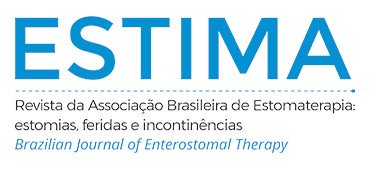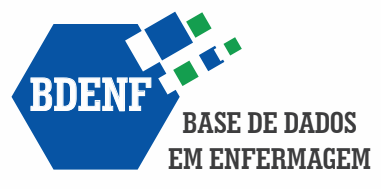PREVENTION OF PRESSURE INJURIES IN THE PRONATION OF COVID-19 PATIENTS: CONSTRUCTION OF A GRAPHIC NARRATIVE
Abstract
Objective: build and validate the content of a graphic narrative on the prevention of Pressure Injury in the prone position in patients affected by the Coronavirus. Method: descriptive methodological study. For the construction of the graphic narrative, a scope review was carried out. Narrative content validation was performed by nurses working in stomatherapists in respiratory intensive care units in Santa Catarina, who responded to a form on Googleforms® with response options from disagree to agree. Data analysis was performed using the Content Validity Index, considering appropriate > 0.80%. Results: the care listed to compose the narrative were: skin assessment; keeping the skin clean and hydrated; use of pressure redistribution devices; use of silicone foams, transparent films, barrier-forming spray and silicone on bony prominences, under medical devices and on the face. The recommended position is that of the swimmer, repositioning the patient every two hours. Conclusion: the graphic narrative was valid for expert nurses whose emphasis is on preventive care in order to promote the engagement of the Nursing team in the face of the importance of Pressure Injury prevention in the care of patients with Coronavirus and prone.
Downloads
Metrics
References
World Health Organization. Rational use of personal protective equipment for coronavirus disease (COVID-19): Interim guidance. World Health Organization. 2020. [Cited 2021 Mar 21]. Disponível em: https://apps.who.int/iris/bitstream/handle/10665/331215/WHO-2019-nCov-IPCPPE_use-2020.1-eng.pdf
Associação de Medicina Intensiva Brasileira. Coronavírus: esclarecimentos da AMIB pelo Comitê de Sepse e Infecção. 2020. São Paulo: AMB (SP); 2020. Disponível em: https://www.amib.org.br/fileadmin/user_upload/amib/2020/marco/21/11_CORONAVIRUS_Esclarecimentos_da_AMIB_pelo_Comite_de_Sepse_e_Infeccao.pdf
Véras JB, Martinez BP, Neto MG, Saquetto MB, Conceição CS, Silva CM. Efeitos da posição prona em pacientes com síndrome do desconforto respiratório agudo: uma revisão sistemática. Rev Pesqui Fisioter 2019;9(1):129-138. https://doi.org/10.17267/2238-2704rpf.v9i1.2175
European Pressure Ulcer Advisory Panel, National Pressure Injury Advisory Panel and Pan Pacific Pressure Injury Alliance. Prevention and Treatment of Pressure Ulcers/Injuries: Quick Reference Guide. Emily Haesler (Ed.). EPUAP/NPIAP/PPPIA. 2019. [Cited 2021 Mar 20]. Disponível em: http://www.internationalguideline.com/static/pdfs/Quick_Reference_Guide-10Mar2019.pdf
Black J, Cuddigan J, Capasso V, Cox J, Delmore B, Munoz N et al. On behalf of the National Pressure Injury Advisory Panel. Unavoidable Pressure Injury during COVID-19 Crisis: A Position Paper from the National Pressure Injury Advisory Panel. 2020. [Cited 2021 Mar 20]. Disponível em: https://cdn.ymaws.com/npiap.com/resource/resmgr/white_papers/Unavoidable_in_COVID_Pandemi.pd
Souza NVDO, Carvalho EC, Soares SSS, Varella TCMML, Pereira SRM, Andrade KBS. Nursing work in the COVID-19 pandemic and repercussions for workers’ mental health. Rev Gaúcha Enferm. 2021;42(spe):e20200225. https://doi.org/10.1590/1983-1447.2021.20200225
Machado GB, Wives LK, Grandi R. As comunidades de prática como ferramenta para formação continuada de professores: percepções docentes sobre o uso da tecnologia para compartilhamento e aprimoramento das práticas pedagógicas. Anais do XXX SBIE. 2019; 1991-2004. https://doi.org/10.5753/cbie.sbie.2019.1995
Green MJ, Myers KR. Medicina gráfica: uso de quadrinhos na educação médica e no atendimento ao paciente. BMJ. 2010; 340:c863. https://doi.org/10.1136/bmj.c863
Albright KS, Gavigan, K. Information Vaccine: Using Graphic Novels as an HIV/AIDS Prevention Resource for Young Adults. J Educ Libr Inf Sci. 2014;55(2) [Cited 2021 Nov 15]: 178-85. Disponível em: https://files.eric.ed.gov/fulltext/EJ1074316.pdf
Cassiano AN, Silva CJA, Nogueira ILA, Elias TMN, Teixeira E, Menezes RMP. Validação de tecnologias educacionais: estudo bibliométrico em teses e dissertações de enfermagem. Revista de Enfermagem do Centro-Oeste Mineiro. 2020;10:e3900. http://doi.org/10.19175/recom.v10i0.3900
The Joanna Briggs Institute. Joanna Briggs Institute Reviewers manual: 2014 edition: methodology for jbi mixed methods systematic reviews. 2014 [Cited 2021 Mar 20]. Disponível em: https://nursing.lsuhsc.edu/JBI/docs/ReviewersManuals/MixedMethods.pdf
Alexandre NMC, Coluci MZO. Validade de conteúdo nos processos de construção e adaptação de instrumentos de medidas. Ciênc Saúde Coletiva. 2011;16(7):3061-68. https://doi.org/10.1590/S1413-81232011000800006
Pasquali, L. Psicometria. Revi Esc Enferm. 2009; 43(Esp.):992-9. https://doi.org/10.1590/S0080-62342009000500002
Dondorp AM, Hayat M, Aryal D, Beane A, Schultz MJ. Respiratory Support in COVID-19 Patients, with a Focus on ResourceLimited Settings. Am J Trop Med Hyg. 2020;102(6):1191-7. https://doi.org/10.4269/ajtmh.20-0283
Souza MFC, Zanei SSV, Whitaker IY. Risco de lesão por pressão em UTI: adaptação transcultural e confiabilidade da EVARUCI. Acta Paul Enferm. 2018;31(2):201-8. https://doi.org/10.1590/1982-0194201800029
Ramalho AO, Freitas PSS, Moraes JT, Nogueira PC. Reflexões sobre as recomendações para prevenção de lesões por pressão durante a pandemia de COVID-19. ESTIMA, Braz J Enterostomal Ther. 2020;18:e2520. https://doi.org/10.30886/estima.v18.940_PT
Saran S, Gurjar M, Kanaujia V, Ghosh PS, Gupta A, Mishra P et al. Effect of Prone Positioning on Intraocular Pressure in Patients With Acute Respiratory Distress Syndrome. Crit Care Med. 2019;47(9):e761-6. https://doi.org/10.1097/CCM.0000000000003893
Wounds International TV. COVID-19 and tips for safe skin and proning: What should skin care involve for patients in the prone position?. 2020. [Cited 2021 Mar 20]. Disponível em: https://woundsinternationaltv.com/editors-chioce/covid-19-and-tips-forsafe-skin-and-proning/
Magro C, Mulvey JJ, Berlin D, Nuovo G, Salvatore S, Harp J et al. Complement associated microvascular injury and thrombosis in the pathogenesis of severe COVID-19 infection: A report of five cases. Transl Res. 2020;220:1-13. https://doi.org/10.1016/j.trsl.2020.04.007
Odor PM, Neun M, Bampoe S, Clark S, Heaton D, Hoogenboom EM et al. Anaesthesia and COVID-19: infection control. Br J Anaesth. 2020;125(1):16-24. https://doi.org/10.1016/j.bja.2020.03.025
Lou B, Li TD, Zheng SF, Su YY, Li ZY, Liu W et al. Serology characteristics of SARS-CoV-2 infection after exposure and postsymptom onset. Eur Respir J. 2020;56(2): 2000763. https://doi.org/10.1183/13993003.00763-202
Black, J, Alves P, Brindle CT, Dealey C, Santamaria N, Call E et al. Use of wound dressings to enhance prevention of pressure ulcers caused by medical devices. Int Wound J. 2015;12(3):322-7. https://doi.org/10.1111/iwj.12111
Payne D. Skin integrity in older adults: pressure-prone, inaccessible areas of the body. Br J Community Nurs. 2020;25(1):22-6. https://doi.org/10.12968/bjcn.2020.25.1.22
Moore Z, Patton D, Avsar P, McEvoy NL, Curley G, Budri A et al. Prevention of pressure ulcers among individuals cared for in the prone position: lessons for the COVID-19 emergency. J Wound Care. 2020;29(6):312-20. https://doi.org/10.12968/jowc.2020.29.6.312
Kim RS, Mullins K. Preventing Facial Pressure Ulcers in Acute Respiratory Distress Syndrome (ARDS). J Wound Ostomy Continence Nurs. 2016;43(4):427-9. https://doi.org/10.1097/WON.0000000000000247
Downloads
Published
How to Cite
Issue
Section
License
Copyright (c) 2021 Daniela Soldera, Cilene Fernandes Soares, Juliana Balbinot Reis Girondi, Nádia Chiodelli Salum, Mônica Stein, Lúcia Nazareth Amante, Luciara Fabiane Sebold, Gisele Martins Miranda

This work is licensed under a Creative Commons Attribution 4.0 International License.

























